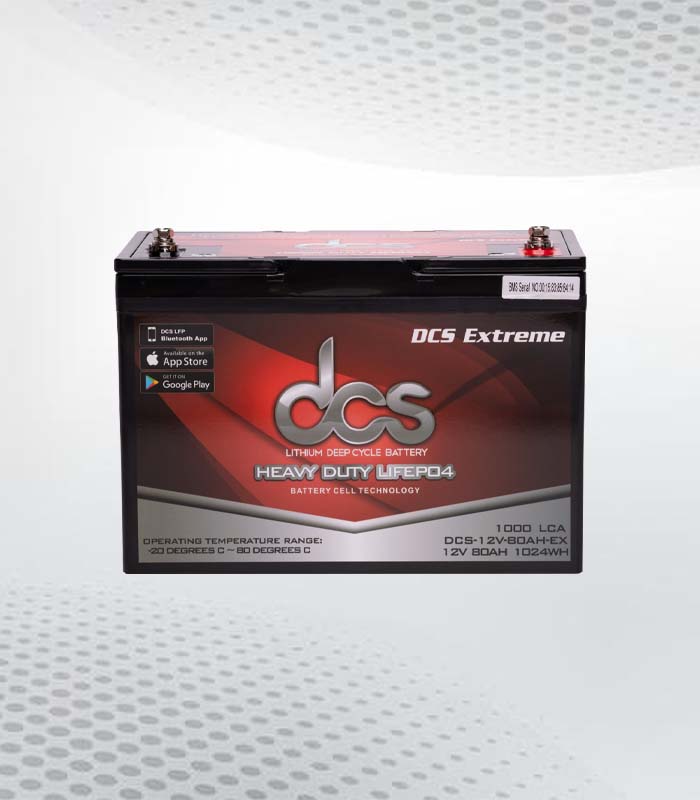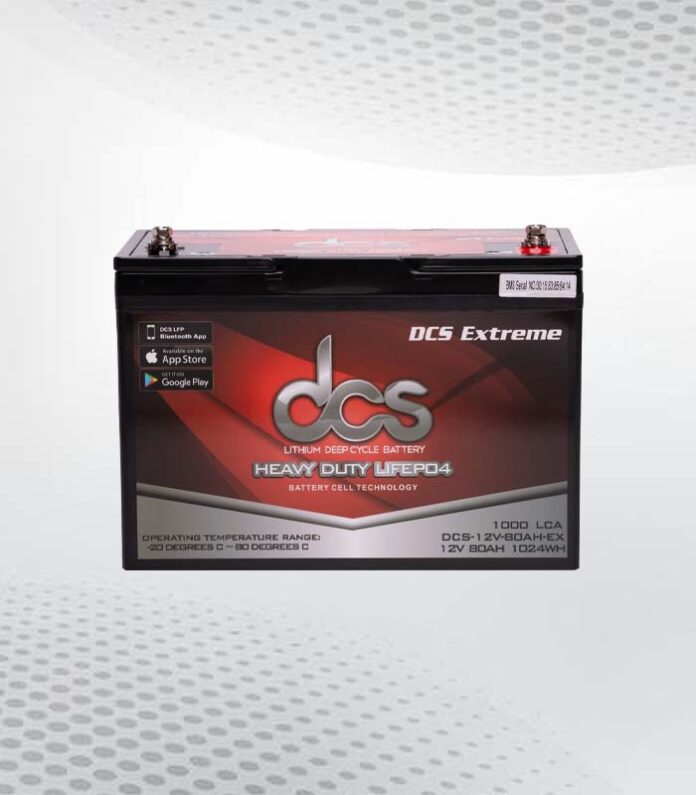Lithium-batteries have become an integral part of our everyday lives, powering a wide range of devices from smartphones to electric vehicles. The technology behind lithium-battery has revolutionised the way we use portable electronics and has paved the way for a more sustainable future. In this blog post, we will delve into the magic of lithium battery, understanding its basics, evolution, applications, safety concerns, and future innovations.
Understanding the Basics of Lithium-Battery Technology
Lithium-battery technology hinges on the unique properties of lithium ions, which serve as the lifeblood of these power sources. Central to their operation is the movement of these ions through an electrolyte from the anode to the cathode when the battery discharges and the reverse when it charges.
This process is facilitated by lithium’s lightweight and highly reactive nature, allowing for a high energy output relative to the battery’s size. Lithium-battery electrodes are made from lightweight lithium and carbon, contributing to their overall efficiency and capacity for energy storage. Using a solid or liquid electrolyte enables the efficient transfer of lithium ions between the electrodes, a critical factor in the battery’s ability to deliver power to devices.
The innovative design of these batteries maximises energy density and plays a crucial role in their rechargeability, setting them apart from disposable alternatives. This rechargeable feature is underpinned by the battery’s ability to efficiently reverse the chemical process during charging, significantly contributing to its widespread adoption in numerous technological applications.
The Evolution of Lithium-Battery over the Years
The journey of lithium-battery technology has been marked by significant milestones, transforming from its primitive versions to the sleek, high-capacity power sources we rely on today. In the 1970s, the first commercially viable lithium-batteries were introduced, albeit non-rechargeable and with limited applications. The breakthrough came in the 1990s when the development of lithium-ion batteries enabled rechargeability, dramatically enhancing their utility and scope.
This period heralded a new era for portable electronics, empowering devices with longer life and reliability. Over the decades, continuous improvements in electrode materials and electrolyte compositions have substantially increased their energy density and performance. The adoption of lithium-batteries in electric vehicles and renewable energy storage has further spurred innovation, leading to advancements in safety features and charging technology.
Today, we stand on the cusp of another evolution, with the potential introduction of solid-state batteries and silicon-based anodes promising even greater efficiencies and capacities. Each step in this journey reflects the technological advancements and the growing importance of lithium-batteries in achieving a sustainable energy future.
Comparing Lithium-Batteries with Other Types of Batteries
Lithium-batteries distinguish themselves from traditional battery technologies such as lead-acid and nickel-cadmium through several superior characteristics. They boast a higher energy density, which enables them to store more energy in a smaller space. This feature is particularly beneficial for portable electronics and electric vehicles, where space and weight constraints are critical considerations.
Lithium-batteries also offer a significantly longer cycle life, enduring more charge and discharge cycles before their capacity begins to degrade. Another notable advantage is their faster charging capabilities, crucial in today’s fast-paced world. Users can recharge their devices in a fraction of the time it takes to charge devices powered by older battery technologies.
Lithium-batteries have a lower self-discharge rate, meaning they retain their charge for extended periods when not in use, making them more reliable for emergencies or infrequent applications. Despite these advantages, it is vital to consider application-specific requirements when choosing a battery type, as each technology has unique benefits and limitations.
The Wide Range of Applications for Lithium-Batteries
Lithium-batteries power many pivotal devices in our daily lives and the broader economy. Their high energy density and long lifespan make them ideal for mobile phones and laptops, ensuring these essential tools remain operational throughout the day without frequent recharging.
In transportation, electric vehicles (EVs) rely heavily on lithium-battery technology to provide a cleaner, more efficient alternative to fossil fuels, illustrating the crucial role these batteries play in driving environmental sustainability. Beyond personal devices and transportation, lithium-batteries are instrumental in the renewable energy sector, where they store excess energy generated from solar panels and wind turbines.
This capability stabilises the grid and ensures a consistent energy supply, regardless of weather conditions. Furthermore, lithium-batteries are finding applications in medical devices, including pacemakers and portable diagnostic equipment, underscoring their versatility and reliability across various fields. As industries evolve, the demand for compact, high-performance power sources will likely increase, positioning lithium-batteries at the forefront of technological advancement and sustainability efforts.
Addressing Safety Concerns and Myths around Lithium Batteries
Lithium-batteries, whilst predominantly safe, have had their share of attention regarding safety concerns, primarily due to thermal runaway, leading to overheating and, in rare cases, fires. These incidents, often resulting from manufacturing flaws or mishandling, have given rise to various myths surrounding their safety. It’s imperative to debunk these myths by understanding the rigorous safety standards these batteries undergo before reaching consumers.
Modern lithium batteries incorporate built-in safety mechanisms such as pressure vents and thermal fuses to mitigate risks of overheating and potential combustion. Ensuring that lithium-batteries are sourced from reputable manufacturers and adhering to usage, charging, and storage guidelines minimises any associated risks. It is also essential to recognise the importance of using the correct charger and avoid exposing batteries to extreme temperatures, which can exacerbate safety risks.
 Educating users on proper handling and care can dispel unfounded fears and highlight the reliability of lithium-batteries in a multitude of applications. Through proper education and adherence to safety practices, the benefits of lithium-batteries can be enjoyed without undue concern, allowing for their continued role in powering modern life safely and efficiently.
Educating users on proper handling and care can dispel unfounded fears and highlight the reliability of lithium-batteries in a multitude of applications. Through proper education and adherence to safety practices, the benefits of lithium-batteries can be enjoyed without undue concern, allowing for their continued role in powering modern life safely and efficiently.
Charging Lithium-Batteries: Tips and Tricks
Adopting correct charging practices is crucial to maximise the lifespan and efficiency of lithium-batteries. Here are several tips and tricks that can help:
Use the Right Charger
Always use the charger that the manufacturer approves with your device. Chargers with incorrect voltage or current specifications can harm your battery’s lifespan or pose safety risks.
Avoid Extreme Temperatures
Lithium-batteries are sensitive to high and low temperatures. Charging your device in hot or cold conditions can degrade the battery’s performance. Ideally, charge your battery at room temperature.
Partial Charges Are Preferable
Contrary to popular belief, lithium-batteries benefit from partial charges rather than letting them drain completely before charging. Keeping the battery level between 20% and 80% reduces wear and extends its lifespan.
Unplug Once Charged
While modern lithium-batteries are designed to prevent overcharging, it’s good practice to unplug your device once it reaches full charge. This avoids heat build-up and contributes to the battery’s long-term health. Implementing these straightforward yet effective strategies can significantly enhance your lithium-battery’s performance and longevity, ensuring that your devices remain powered for longer and work more efficiently.
Exploring the Future Innovations of Lithium-Batteries
As the quest for more sustainable and efficient energy sources intensifies, the research into lithium-battery technology is pushing the boundaries of what is possible. Future innovations are mainly focused on overcoming current limitations and unlocking new applications. Among these advancements, solid-state batteries stand out for their potential to drastically improve safety and energy density.
By replacing the liquid electrolyte with a solid, these batteries aim to minimise the risk of leakage and thermal runaway, a significant step forward in addressing safety concerns. The development of silicon anodes represents another exciting avenue of research. Silicon can store up to ten times more lithium than the graphite used in current anodes, offering a substantial leap in energy density.
Emerging technologies, such as lithium-sulphur and lithium-air batteries, hint at a future where batteries could deliver significantly higher energy densities at lower costs. While cycle life and stability need to be addressed, these innovations could redefine energy storage solutions. As research continues, the evolving landscape of lithium-battery technology promises to enhance current applications and open doors to new possibilities in energy storage and utilisation.
Revolutionising Energy Storage with Lithium-Battery Innovation
The advent of lithium-battery technology in renewable energy systems is fundamentally changing our approach to energy storage and distribution. By integrating these batteries with solar panels and wind turbines, we can harness and store renewable energy more efficiently than ever. This innovation allows for the accumulation of excess power during peak production times, which can then be distributed when energy generation is lower, such as during night-time or on less windy days.
Such a system enhances the reliability and stability of the energy grid, reducing our reliance on fossil fuels and moving us closer to achieving a sustainable energy ecosystem. Lithium-batteries, with their high energy density and ability to withstand numerous charge cycles, are ideally suited to meet the demands of large-scale energy storage.
They facilitate a smoother transition between different energy sources, ensuring a consistent electricity supply. This technological integration also opens new possibilities for remote and off-grid energy solutions. Thanks to the portability and efficiency of lithium-battery storage systems, communities in isolated areas can now access reliable power.
Conclusion
In essence, this post’s exploration of lithium-battery technology illuminates its pivotal role in contemporary and future technologies. From powering daily devices to its transformative impact on renewable energy storage, lithium-batteries underscore a remarkable innovation journey. Embracing proper usage and advancing research is vital to harnessing their full potential, ensuring they continue facilitating sustainable and efficient energy solutions worldwide. As we advance, the ongoing evolution of lithium-battery technology promises to sustain its integral place in our lives and contribute significantly to environmental preservation and energy independence.
FAQs
How does a lithium-battery work?
A lithium-battery operates through a chemical reaction between lithium ions and the materials within its electrodes. Lithium ions move from the negative electrode (anode) through the electrolyte to the positive electrode (cathode), generating electrical energy during discharge. This process is reversed when charging, with lithium ions returning to the anode.
What are the advantages of using a lithium-battery?
Lithium-batteries offer high energy density, providing more energy storage capacity than other battery types. They also have a low self-discharge rate, retaining stored energy for more extended periods. Additionally, they exhibit a relatively flat discharge curve, delivering consistent power until near depletion.
What are the safety considerations with a lithium-battery?
While generally safe, lithium-batteries can pose risks if mishandled or damaged. Overcharging, overheating, or physical abuse can lead to thermal runaway, causing fires or explosions. Proper charging, storage, handling procedures, and built-in safety features like overcharge protection are essential to mitigate these risks.
How long does a lithium battery last?
The lifespan of a lithium battery depends on various factors, including usage patterns, charging habits, and environmental conditions. Typically, they can endure hundreds to thousands of charge-discharge cycles before experiencing significant capacity degradation, which may translate to several years of reliable performance.
Can a lithium-battery be recycled?
Yes, lithium-batteries are recyclable, and recycling programs exist to recover valuable materials such as lithium, cobalt, and nickel. Proper recycling conserves natural resources and reduces environmental impact by preventing hazardous substances from entering landfills.
| Other Good Articles to Read |
| Niche Blogs Connect |
| Blogs 97 |
| Blog Stitution |
| Blogs Unplugged |
| Blogs Cotch Rouge |
| Blog Signatr |
| Blog Sintonias |
| Blog Zilla |
| Consumer Forums |
| Finance Forums |
| Too Blog |
| Related Business Listings |
| Contact Directory |
| Local Business Profiles |
